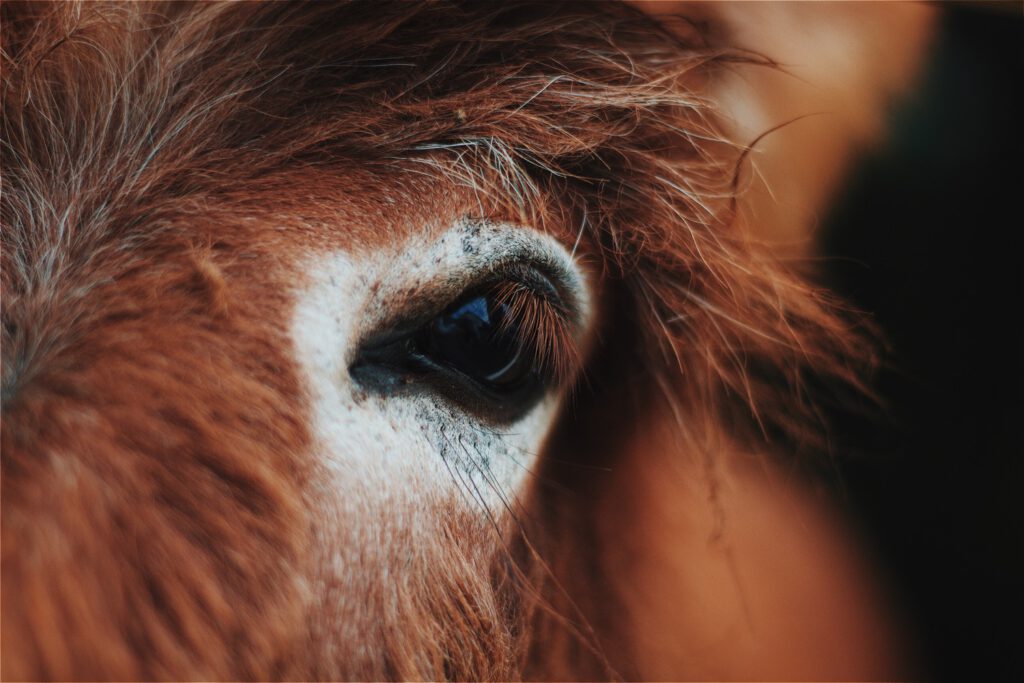Endoscopy is an examination technique which consists in looking at the cavity of certain organs, and in the horse the lumen of the respiratory system (first airways and bronchial tree) and its annexed cavities (sinuses, guttural pouches), digestive, urogenital, but also the interior of the thoracic and abdominal cavities. Developed a long time ago, the equine veterinarian has benefited from the development of this technique in human medicine by being able to use the same instruments called endoscopes. These can be rigid devices (called laparoscopies because they are used for the examination of the abdominal cavity) or flexible devices (they are fiberscopes when the image is captured by multiple optical fibers or video-endoscopes when it is a mini-camera located at the end of the instrument that films the images).

The main endoscopic examinations performed in the horse are arthroscopy and laparoscopy in surgical pathology, and endoscopy of the first respiratory tract (the larynx) and the first digestive tract (esophagus and stomach) in medical pathology. Several types of apparatus are of course necessary depending on the organ examined, in terms of diameter and length. These examinations are performed, depending on the character of the animal, after the placement of a nose cone or after chemical sedation. The horse can be placed in an examination stall in the hospital sector to ensure optimal restraint.
Respiratory endoscopy in horses
The main indications for respiratory endoscopy are horniness (respiratory noises), bleeding, purulent discharges, and swallowing difficulties. The images obtained are generally diagnostic in the case of paralysis of the larynx, usually unilateral on the left, in the case of mycotic diseases of the guttural pouches (which are particular to equids and correspond to a diverticulum of the auditory tube) or in the case of neoformations in the nasal cavities, such as a progressive hematoma of the ethmoid or in the throat (nasopharynx)
Endoscopic examination of the trachea and bronchi requires a device at least 2 meters long to visualize abnormal secretions.
Digestive endoscopy in horses
Endoscopy of the esophagus and stomach requires an even longer apparatus (at least 3 meters) to introduce it into the stomach and sometimes into the duodenum. Dilatations of the esophagus can be observed, removal of foreign bodies (esophageal plugs) can be performed under visual control; endoscopy of the stomach is the examination of choice for the diagnosis of ulcers.
During endoscopic examinations of the respiratory and digestive systems, samples are often taken (aspiration of abnormal secretions, irrigation and washing for cytological and bacteriological examinations, biopsies of the mucosa for histological analysis).
Joint endoscopy in the horse
Joint endoscopy is performed under general anesthesia and allows the surgeon to remove small fragments from the joint (see chapter on osteochondrosis).
Finally, as in human medicine, the development of specific equipment has made it possible to offer abdominal and thoracic surgery under laparoscopy and thoracoscopy, respectively. These techniques can be performed on a standing horse under sedation and analgesia or under general anesthesia. They allow an inspection of most of these cavities and can be diagnostic; certain operative techniques such as cryptorchiectomy (removal of a testicle abnormally located in the abdominal cavity) or oophorectomy (removal of an ovary) can be proposed under laparoscopy.
Discover H-150 from Royal Horse, the complementary feed, formulated for efforts intended for horses and ponies subject to muscular and/or gastric dysfunctions!


